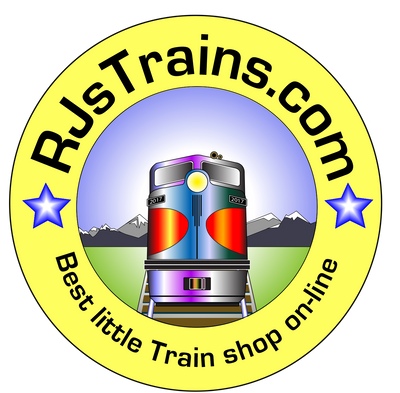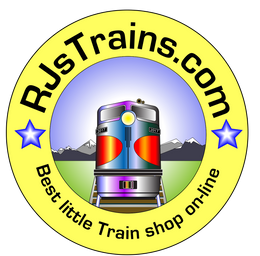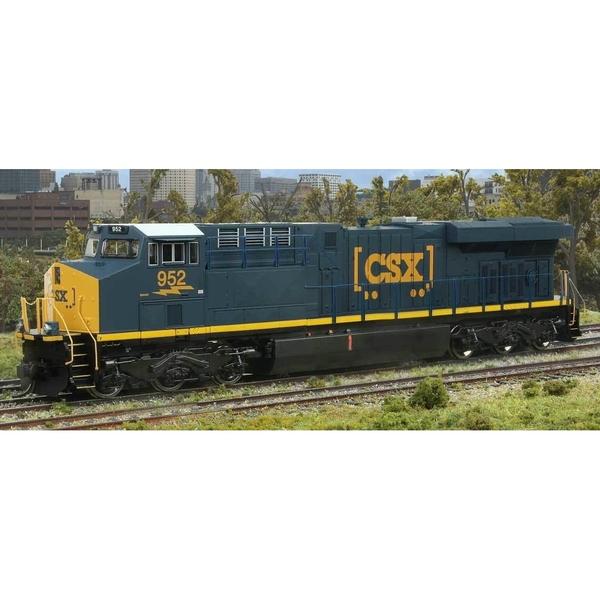
Atlas Master Line, HO Scale, 10004028, Gold Series, GP40, CSX (Bright Future), #6641
- In stock, ready to ship
- Inventory on the way
-
-
Gold Series - DCC AND SOUND EQUIPPED
In 1966 EMD introduced a new line of locomotives based on the 16-cylinder 645-series prime mover. The "40-series" included a six-axle and four-axle model, the latter being the GP40. A total of 1,145 units were produced between 1966 and 1972. These turbocharged 3,000hp locomotives were used primarily in road freight service. The GP40 was a versatile locomotive that could be found across the US hauling drag freights over mountain passes and leading high-speed intermodal trains across flat terrain. Three rooftop radiator fans at the rear of the long hood differentiate a GP40 from its lower horsepower counterpart, the GP38, which has two fans at this location.
Concurrent with GP40 production, EMD offered a lower horsepower, non-turbocharged locomotive based on the same 645-series prime mover. The four-axle GP38 was rated at 2,000 hp and had the advantage of costing less than the GP40. A total of 727 units were produced between 1966 and 1971 when the model was superseded. The wheelbase of the GP38 was identical to that of the GP40. Both units shared the same EMD road-switcher style body that was introduced with the GP35 in 1963. A desire for standardization caused the GP38 to share the same wheelbase, frame and many external components as the GP40. The GP38 was purchased by large and small roads alike. It was routinely found in local and road freight service throughout the US. Many GP38s and 40s are still in service today.
Features:
Golden-white LEDs
Realistic die-cast underframe
Five-pole skewed armature motor with dual flywheels for optimum performance at all speeds
Directional lighting
Factory-equipped with AccuMate knuckle couplers
Detailed cab interior with crew
Separately-installed scale windshield wipers, metal grab irons and fine scale handrails
Movable drop steps
Walkway safety tread
Coupler cut bars
Multiple unit hoses and trainline hoses
Snowplow
Additional feature parts included but not installed (GP-40):
Electrical cabinet air filter box (ECAFB)
Two engine compartment roof vents which were added by many railroads sometime after delivery
Sound Features for Gold Series:
DCC Operation Features:
Supports all DCC-programming modes
Flexible mapping of function keys F0 to F28
Follows all NMRA DCC standards and recommended practices
Sound Functionality Features:
Over 20 sound effects are available, including engine start-up and shutdown, prime mover sounds through all eight notches, bell, air horn, air compressor, dynamic brakes and more
There are 16 user-selectable horns, 2 user-selectable bells, and 2 user-selectable synchronized brake squeals
Manual and Automatic Notching modes with the ability to change modes "on the fly" are provided for true realismExtra information on the Paint Scheme and their meanings Thanks to Locomotive.fandom.com I'll provide a link at the bottom. Please check them out!Locomotive Paint Scemes
Initially, CSX painted their engines in a gray scheme, nicknamed "Stealth" by train crews, due to its low visibility. CSX then put dark blue around the top and front, but it still didn't do. CSX officials were not satisfied; thus, the YN1, or "Yellow Nose 1", scheme, was introduced, featuring the same basic design as "Stealth", but with a yellow nose and a yellow stripe along the frame.
YN2, or "Bright Future", was introduced during the 1990's. This scheme included a new stripe variation of yellow, blue and gray, with black trucks/fuel tank/pilots. New AC-traction locomotive deliveries had lightning bolts painted just below or on either side of the unit's number on the cab, signifying AC traction. The lightning bolt tradition carries on to the modern day on CSX.
CSX's current scheme is YN3 ("Dark Future"). In 2011, the YN3 scheme as well as the CSX logo was changed. The company's new "boxcar" logo was then added to the YN3 scheme, this change resulted in the making of the "YN3b" paint scheme. This change didn't last very long however. Staring in 2021 CSX has once again changed their primary paint scheme, replacing the "boxcar" logo with a website link underneath the letter "X" in CSX. This alteration resulted in the "YN3c" or "YN3w" with the W standing for website. - this is CSX's most current, official paint scheme to date.
Source Locomotive.Fandom.com
-


